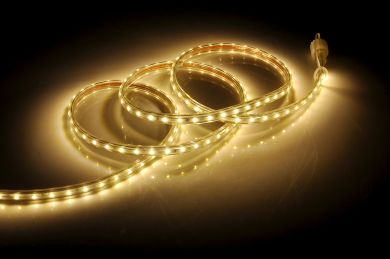Chronology of the long history of LED

The history of Enlightenment is long and it is fascinating to think how much it has evolved over time to get to where it is today. In today's article we will analyze the long chronology of the History of LED, so fundamental to contemporary lighting.
1907 - Henry Joseph Round, a British scientist, discovered that silicon carbide combined with a small piece of wire would light up if a current passed through it. In addition to publishing the discovery, his research went in another direction and the discovery was lost in time.
1921 - Oleg Lossew made detailed studies of light-emitting diodes for over a decade. However, he died in 1942 with his work still unknown. Only
more recently his work with LEDs has been recognized.
1935 - Georges Destriau is nicknamed the inventor of electroluminescence and coined the term 'Light Lossew' to refer to the light emitted by the diode. He published a report on electroluminescence after observing it in zinc sulfate powders.
1951 - The development of the transistor is a big step forward for semiconductor physics and LEDs, as these allowed current to flow to create a diode.
1961 - James R. Biard and Gary Pittman accidentally invented the first infrared LED while working at Texas Instruments.
1962 - Nick Holonyak, Jr., an engineer working at General Electric, made a monumental discovery by developing an LED that emitted visible light. It was a red LED. This was the first LED in the visible spectrum and entered the market in the same year. It was first used as a light indicator in the military.
1972 - M. George Craford, Holonyak's student, building on his mentor's research, developed a much brighter red LED light and managed to perfect the emission of another color by creating the first LED to emit a visible yellow light. The results of the new semiconductor materials also meant that LEDs could now be green and orange.
1972 - Herbert Maruska and Jacques Panvoke, through various experiments, created the first violet LED which was the basis for the first blue LED light later on.
1993 - Shuji Nakamura, who worked at Nichia Corporation, was responsible for the invention of the blue LED. The invention of the blue LED is important because it can be combined with yellow light, thus creating the much-desired white light. It is considered a major advance in lighting technology and his work has been recognized, including the awarding of the 2014 Nobel Prize in Physics.
1995 - First LED white light luminescence conversion achieved, and this was launched as a light 2 years later.
2006 - The first LED with 100 lumens per Watt is produced.
With the increasing use of LEDs, as a result of various advantages that you can know here, the LED story is not over yet. On the contrary, new developments are made frequently and LED technology continues to advance into new areas.
At Tromilux, almost all of our products use LED technology. Discover all our products here on our website!
1907 - Henry Joseph Round, a British scientist, discovered that silicon carbide combined with a small piece of wire would light up if a current passed through it. In addition to publishing the discovery, his research went in another direction and the discovery was lost in time.
1921 - Oleg Lossew made detailed studies of light-emitting diodes for over a decade. However, he died in 1942 with his work still unknown. Only
more recently his work with LEDs has been recognized.
1935 - Georges Destriau is nicknamed the inventor of electroluminescence and coined the term 'Light Lossew' to refer to the light emitted by the diode. He published a report on electroluminescence after observing it in zinc sulfate powders.
1951 - The development of the transistor is a big step forward for semiconductor physics and LEDs, as these allowed current to flow to create a diode.
1961 - James R. Biard and Gary Pittman accidentally invented the first infrared LED while working at Texas Instruments.
1962 - Nick Holonyak, Jr., an engineer working at General Electric, made a monumental discovery by developing an LED that emitted visible light. It was a red LED. This was the first LED in the visible spectrum and entered the market in the same year. It was first used as a light indicator in the military.
1972 - M. George Craford, Holonyak's student, building on his mentor's research, developed a much brighter red LED light and managed to perfect the emission of another color by creating the first LED to emit a visible yellow light. The results of the new semiconductor materials also meant that LEDs could now be green and orange.
1972 - Herbert Maruska and Jacques Panvoke, through various experiments, created the first violet LED which was the basis for the first blue LED light later on.
1993 - Shuji Nakamura, who worked at Nichia Corporation, was responsible for the invention of the blue LED. The invention of the blue LED is important because it can be combined with yellow light, thus creating the much-desired white light. It is considered a major advance in lighting technology and his work has been recognized, including the awarding of the 2014 Nobel Prize in Physics.
1995 - First LED white light luminescence conversion achieved, and this was launched as a light 2 years later.
2006 - The first LED with 100 lumens per Watt is produced.
With the increasing use of LEDs, as a result of various advantages that you can know here, the LED story is not over yet. On the contrary, new developments are made frequently and LED technology continues to advance into new areas.
At Tromilux, almost all of our products use LED technology. Discover all our products here on our website!